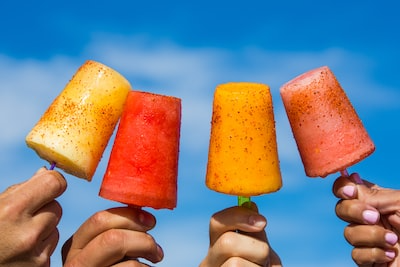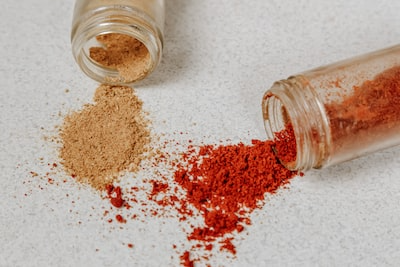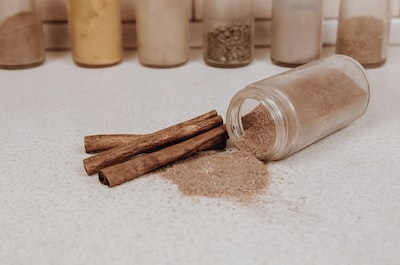
Demystifying Natural Flavors in Today's Food Industry
Curious about the secret behind the irresistible taste of your favorite snack? Natural flavors are often the unsung heroes playing a role in the world of taste. Like a master chef's secret ingredient, they're often shrouded in mystery. A whisper of lemon myrtle here, a dash of vanilla extract there – it's an alchemy of nature and science.
Stroll down any supermarket aisle and you'll see products flaunting 'natural flavor' on their labels. But pause for a moment—can you picture where these flavors come from or how they transform your food experience?
What exactly are natural flavors?
More than a deep dive into food additives; think of this article as peeling back the layers of Mother Nature’s pantry to reveal her culinary secrets. By journeying through this post, you'll unlock the origins and processes behind those elusive ingredients list mentions - understanding more than just a term but tasting the story behind each bite.
Let's explore the intricate details to ensure you have all the essential knowledge to keep you up to speed.

Table of Contents:
- Unpacking the Mystery of Natural Flavors
- Lemon Myrtle's Rise as a Citrus Alternative
- The Creation Process Behind Natural Flavor Extracts
- Safety Regulations Governing Natural Flavors
- Decoding Labels - Natural vs Artificial Flavors
- The Broad Spectrum of Natural Flavor Applications
- Trendsetting in Taste - The Future Outlook for Natural Flavors
- FAQs in Relation to Natural Flavors
- Conclusion
Unpacking the Mystery of Natural Flavors
What Exactly Are Natural Flavors?
Navigating through food labels, you might spot 'natural flavors' and wonder what that term really means. The FDA defines these as substances extracted from plant or animal sources, used to add a specific flavor. Think about the burst of zest when biting into an orange; it's this essence, but concentrated.
Beyond just providing taste, natural flavors can include components for aroma or even color derived from nature’s pantry – be it fruit juice for sweetness or vegetable juice for hues. But did you know? Over 100 chemicals could mingle in these mixtures, along with solvents and preservatives ensuring their stability and shelf life. They’re complex creations indeed.
The Origins of Taste
Mother Nature is generous with her bounty – everything from edible yeast to common allergens like nuts contributes to creating tantalizing tastes. These ingredients are minimally processed before they enhance our favorite foods.
Lemon myrtle, for example, has seen its popularity soar as a vibrant citrus alternative - all thanks to its rich chemical composition teeming with freshness. It’s a prime pick among food manufacturers seeking natural solutions over artificial flavorings that lack connection to any edible source.
Natural flavors are more than just taste; they're complex blends of extracts from nature, sometimes mixed with chemicals for stability. They come from plants or animals and can include elements that impact aroma and color too. But remember, 'natural' doesn't automatically mean healthier—these flavors can be as varied as the sources they come from.
Lemon Myrtle's Rise as a Citrus Alternative
Lemon myrtle is making waves as a zesty, natural flavor in the culinary world. With its vibrant citrus profile, it stands out among other natural flavors, providing food manufacturers with an enticing alternative to traditional citrus ingredients.
Its versatility shines through when used in various food products. As a citrus flavor substitute, lemon myrtle offers distinct advantages: not only does it impart that sought-after tangy taste but also adds an aromatic depth that can't be mimicked by artificial flavors or even common citrus fruits like lemons and limes.
This Australian native isn’t just about taste; chefs are recognizing lemon myrtle for its ability to enhance flavor without overpowering dishes—making it perfect for savory creations and scent-sational beverages alike. From spicing up a grilled fish to giving cocktails that extra punch, this powerhouse herb serves as both a seasoning and a key aroma component.
What truly sets apart this Aussie gem is its rich chemical composition which provides more than just taste; indeed, every sprinkle of dried leaf or drop of essential oil carries Mother Nature’s essence into our meals.
The use of lemon myrtle aligns with consumer trends pushing towards minimally processed ingredients from natural sources over synthetic chemicals found in many artificial flavorings. As consumers become savvier readers of food labels, they're learning to favor 'natural flavors'—and when you choose lemon myrtle, you’re choosing the full bounty nature has to offer.
The Creation Process Behind Natural Flavor Extracts
Ever wondered how lemon myrtle transforms into an essence that's bursting with zesty citrus notes? Extracting natural flavors is both an art and a science, capturing the very soul of nature.
 From Source to Essence
From Source to Essence
To begin, fresh plant material undergoes meticulous selection for the highest quality. The extraction process often involves distillation or pressing—techniques honed over centuries but now perfected by modern technology.
Quality in natural flavor extracts, however, isn't just about vibrant taste; it's also about ensuring safety and consistency. This means adhering to stringent regulations throughout production stages.
Safety Regulations Governing Natural Flavors
The Regulatory Framework
Ensuring the safety of our food is a critical concern. You might wonder, are natural flavors safe to consume? Well, there's a whole framework set up just for that, with government bodies having strict guidelines on flavoring substances.
For instance, FEMA is the Flavor Extract Manufacturers Association, which works alongside the FDA. They help ensure that every dash of natural flavor in your food meets rigorous safety standards. Think of FEMA as taste testers who put health first; they're like culinary guardians.
FEMA regulates these flavorful additions meticulously so you can enjoy your meal without worry about hidden dangers or calories since natural flavors don't pack extra kilojoules.
Decoding Labels - Natural vs Artificial Flavors
Navigating food labels can be like walking through a maze. You'll often come across terms like 'natural flavors' and 'artificial flavors'. Do these terms have any real significance?
The Label Language Interpreted
You might think that natural flavors are simply plucked from mother nature's pantry, while artificial ones are concocted in a lab. The truth is more nuanced. The definition of 'natural flavor' is not legally formalized, but usually implies an origin from plant or animal sources. On the flip side, artificial flavors don't originate from anything edible at all.
To add another layer to this puzzle of palates: vanilla extract is widely known as a natural flavoring; yet vanillin—its synthetic twin—is labeled an artificial flavor despite being chemically identical. This illustrates how defining these substances isn’t always straightforward.
Food labels can be tricky, but don't be fooled by 'natural flavors'—they might not be as pure as you think. These ingredients often come with a cocktail of chemicals used in extraction, and despite the natural label, they're not necessarily healthier.
The Broad Spectrum of Natural Flavor Applications

Culinary Creations
When you think about natural flavors for beverages, it's not just a dash of fruit juice or a pinch of spice. Chefs across Australia are pushing boundaries, infusing natural essences like lemon myrtle into their dishes to create a sensory journey that delights the palate. It’s all about using these natural flavors in savory dishes to enhance and transform them.
Lemon Myrtle, with its vibrant citrus profile, is now being championed as more than just another ingredient; it’s an experience on its own. Whether subtly woven through marinades or used boldly in dressings, this botanical gem turns everyday meals into gourmet adventures.
Scent-sational Beverages
Mixologists aren't far behind chefs in the culinary innovation race. They craft unique drink experiences by weaving together various plant-based extracts and juices, making each sip tell a story—be it one of heritage or invention. The goal? To give patrons drinks they can’t find elsewhere—a combination only possible with nature's finest offerings.
Beyond the bar scene, mixologists collaborate with flavour houses to bring complex profiles to life without relying on synthetic chemicals—the kind that makes you say “I’ll have what she’s having.” So next time you spot ‘natural flavors’ on your beverage menu, know there’s likely some serious creativity bottled up inside.
Trendsetting in Taste - The Future Outlook for Natural Flavors
As taste buds worldwide crave a return to authenticity, natural flavors are stealing the spotlight. From the zing of lemon myrtle in tea to the exotic twist of anise myrtle in sweets, Mother Nature's pantry is open wide. But it's not just about flavor; today’s savvy consumers demand transparency and clean label products.
Consumer trends show a growing unease with synthetic chemicals masquerading as 'natural'. People want real ingredients they can trust—sourced from plants or animals without artificial enhancement. This shift has food manufacturers pondering: How do we deliver authentic taste while satisfying this hunger for natural?
The answer lies partly with botanicals, when used wisely, such potent naturals let us dial down on added sugars and salts—a move welcomed by health-conscious eaters. And it isn't just food labels catching on; beverages too are turning away from chemical mixtures towards essences like these that promise purity.
We're seeing innovative chefs blend culinary traditions with local plant material—think vanilla extract meeting indigenous spices—and crafty mixologists infusing drinks with layers upon layers of natural extracts. As we wave goodbye to processed foods laced with artificial additives, our meals become more than fuel—they tell stories.
What was once a simple sip or bite becomes an experience—one enhanced by nature itself.
FAQs in Relation to Natural Flavors
What exactly are natural flavors?
Natural flavors come from real food sources, including spices, fruits, and veggies. They're extracted to enhance the taste.
Is it OK to eat natural flavors?
Eating natural flavors is generally safe; they meet strict Aussie standards before reaching your plate.
What does natural flavors mean in Australia?
In Australia, 'natural flavors' means the essence is derived from actual plant or animal components – nothing artificial.
What is hidden in natural flavors?
Natural flavor labels can hide a combination of ingredients like oils and extracts that are not always listed in detail on packaging.
Conclusion

So, you've ventured through the labyrinth of natural flavors. You now know they're not just marketing buzzwords but complex blends rooted in nature's bounty.
Remember, these culinary wizards come from both plants and animals. Flavor enhancers can jazz up your food with over a hundred different chemicals, including essential oils and extracts. And yes, lemon myrtle has indeed emerged as a zesty champ among citrus alternatives.
Understand this: extracting these flavors is an art—turning raw materials into those powerful essences that tickle your taste buds. But rest easy; there are strict safety regulations to keep things above board.
Acknowledge the distinction between natural and artificial - it's subtle yet significant when scanning food labels. Be aware that 'natural' and natural flavorings, doesn't always mean healthier or less processed—it’s about source origin.
Last but not least, grasp that while natural flavors might seem like small fry on an ingredients list, their impact on how we enjoy our food is massive—a true testament to Mother Nature’s flair for flavor!


